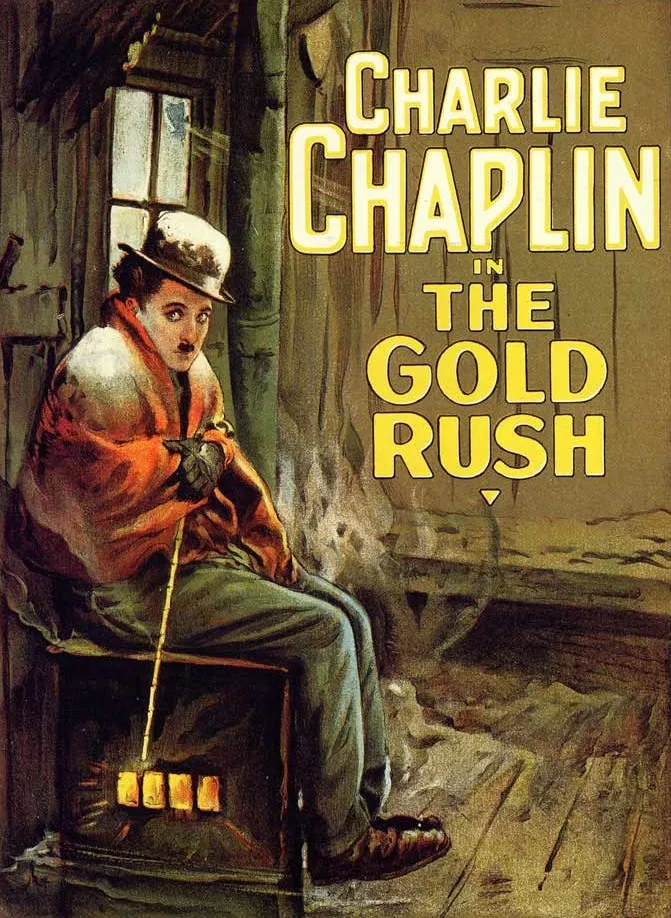
The Gold Rush is a 1925 American silent comedy film written, produced, and directed by Charlie Chaplin, who also stars in the film as his Little Tramp persona. The film is set during the Klondike Gold Rush in the 1890s and follows the story of a prospector who goes to the Klondike in hopes of making his fortune. The film is known for its unique blend of slapstick humor, poignant emotion, and social commentary, making it a classic that stands the test of time. Chaplin drew inspiration from photographs of the Klondike Gold Rush and the story of snowbound individuals in the Sierra Nevada, who were driven to cannibalism or eating leather from their shoes.
Plot
The Gold Rush (1925) is a silent comedy film written, produced, and directed by Charlie Chaplin, who also stars in the film as his Little Tramp persona. The plot revolves around a prospector who goes to the Klondike during the 1890s gold rush in hopes of making his fortune and falls in love with a girl he sees in a dance hall. The story follows the following key events:
Lone Prospector: A lone prospector, played by Charlie Chaplin, ventures into Alaska looking for gold.
Meeting Georgia: The prospector falls in love with a beautiful girl named Georgia, portrayed by Georgia Hale.
Competing for Gold: The prospector and another character, Big Jim, played by Mack Swain, both discover a massive stash of gold on their respective patches of land. They engage in a fierce battle for the territory, with the prospector eventually gaining the upper hand and driving Big Jim away.
Blizzard and Amnesia: A blizzard strikes, and the prospector gets lost in the storm. He stumbles into the cabin of Black Larsen, who tries to eject him but ultimately flees, leaving the prospector unconscious.
Recovery and Return: The prospector recovers consciousness but loses his memory of the events that transpired. He arrives in one of the mushroom cities of the gold trail and becomes the principal amusement of the village.
Reunion: The prospector eventually returns to claim Georgia, but he discovers that a year has passed and she has disappeared.
The film is a unique blend of slapstick humor, poignant emotion, and social commentary, making it a classic that stands the test of time.
Trailer
Cast
- Charlie Chaplin as The Lone Prospector
- Mack Swain as Big Jim McKay
- Tom Murray as Black Larsen
- Henry Bergman as The Interpreter
Director: Charlie Chaplin
Writer: Charlie Chaplin
Box Office Gross: $29,328
Distributor: United Artists
Genre: Comedy, Drama, Adventure
Release Date (Theaters): Jun 26, 1925
Release Date (Streaming): May 5, 2017
Theme
One of the main themes of The Gold Rush (1925) is poverty and starvation, which Chaplin explores through his comedic lens. The film also touches on themes of love, perseverance, and the human spirit's resilience in the face of adversity.
Reception:
The Gold Rush was generally well-received by critics upon its release in 1925, with many praising Chaplin's unique blend of humor and pathos. The film has since become a classic and is widely regarded as one of Chaplin's best works.
Production Challenges:
The production of The Gold Rush was not without its challenges. The film was shot partly on location in the Sierra Nevadas, which presented logistical challenges for the crew. Additionally, the film's budget ballooned to over $900,000, making it one of the most expensive films of its time.
Settings and Visual Styles:
The Gold Rush is set during the Klondike Gold Rush in the 1890s and features stunning visuals of the Alaskan wilderness. The film's visual style is characterized by Chaplin's use of long takes, close-ups, and inventive camera angles to create a sense of intimacy with the characters.
Techniques:
Chaplin employed a variety of techniques in The Gold Rush to create his unique brand of comedy. These included physical comedy, slapstick, and sight gags, as well as more subtle forms of humor, such as irony and satire.
Trivia and Fun Facts:
- The role of the girl was originally intended for Lita Grey, but her pregnancy ruled her out, and Georgia Hale was excellent in her disdain of the unwanted Tramp attentions.
- The film's iconic scene of Chaplin eating a shoe was inspired by the real-life story of snowbound individuals in the Sierra Nevada, who were driven to cannibalism or eating leather from their shoes.
- The film was re-released in 1942 with a narration by Chaplin himself, which added to its appeal and helped it stand the test of time.
- The film's budget ballooned to over $900,000, making it one of the most expensive films of its time.
- The dance of the rolls scene was filmed in reverse, with the actors spitting out the rolls and the footage reversed to create the illusion of them catching the rolls in their mouths.
